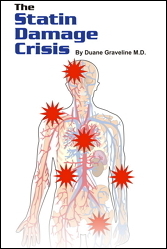Statins and Eyes
In the journal Ophthalmology 115(12) April 2008 Fraunfelder and Richards reported on certain eye conditions related to muscle balance that have been associated with the use of statin drugs. The conditions noted were diplopia ( double vision ) blepharoptosis ( ptosis - drooping eyelid ) or ophthalmoplegia ( weakness or paralysis of the muscles controlling one or both eyes. )
Two hundred fifty-six case reports of ptosis, diplopia, and ophthalmoplegia associated with statins were reported in this group which included both males and females. The average age was 64.5±10 years. The average dosage was within the range recommended in the package insert for each different statin used. Average time from beginning of therapy to appearance of the adverse report was 8.3±1.5 months (range, 1 day-84 months). There were 62 positive dechallenge and 14 positive rechallenge case reports.
According to World Health Organization ( WHO ) criteria, a relationship between statin therapy and diplopia, ptosis, or ophthalmoplegia - ocular myopathy - is possible. This causality assessment is based on the time relationship of drug administration and adverse drug report development, and the plausible mechanism by which diplopia, ptosis, or ophthalmoplegia may occur: myositis of the extraocular muscles, the levator palpebrae superioris muscles, or both. The scientists reasoned that in view of the established effect of statin drugs on skeletal muscles it is only natural to expect that the muscles of the eye would also be susceptible.
A possible mechanism of action was reported recently in the research that defined Lrp4 as the missing link in the neuromuscular junction (NMJ). As nerve impulses enter the NMJ they provoke the formation of a substance know as agrin. A substance identified as MuSK connects to the muscle fibers but in between is a complex area requiring acetylcholine and a missing link until Lrp4 was identified. Lrp4 is a lipoprotein of the LDL lipoprotein type, which of course is susceptible to statin inhibition. Every muscle motion in our complex bodies from our quads to our tiny ciliary muscles of the eye must use this mechanism and cholesterol is critical to its function.
Duane Graveline MD MPH
Former USAF Flight Surgeon
Former NASA Astronaut
Retired Family Doctor






